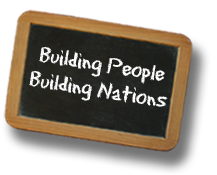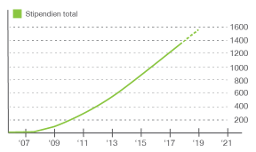Our clear focus on sustainable impact and newly launched goal to empower 1'000 Young Entrepreneurs have allowed us to take the lead.
Blog
Welcoming Michelle Obama to the World Bank and furthering a commitment to girls’ education
Posted on 05/01/2016 at 01:51PM
This blog was written by Rachel Cooper and Oni Lusk-Stover. It was first published on Tue, 04/19/2016 on the World Bank Working for a World Free of Poverty homepage.
“My elder sisters could not get an education because at that time, there was no primary school in the village. For me it was difficult too, my school had no facilities, no water, toilet or rooms for 80 girls. Had this school not been built I would be out of school.” These are the words of Zarghony, the youngest child in a family of six and a beneficiary of the Promoting Girls’ Education in Balochistan Project (PGEB). Zarghony was once among the 62 million girls around the world who are out of school but now she benefits from a safe and secure learning environment.On April 13, President Kim welcomed U.S. First Lady Michelle Obama to the World Bank Group for a Let Girls Learn event during which President Kim announced that the
http://www.worldbank.org/en/news/press-release/2016/04/13/world-bank-group-to-invest-25-billion-in-education-projects-benefiting-adolescent-girls WBG will invest $2.5 billion over 5 years in education projects that directly benefit adolescent girls).
This event and commitment reflect that girls’ education is a strategic development priority. In September 2015, with the adoption of the Sustainable Development Goals (SDGs), the global community committed to a renewed framework for development. The achievement of gender equality and empowerment of women and girls (SDG 5) is central to the SDG agenda. Achieving SDG 5, however, cannot happen without SDG 4 (quality education). We know that better educated women tend to be healthier than uneducated women, participate more in the formal labor market, earn higher incomes, have fewer children, marry at a later age, and enable better healthcare and education for their children. All these factors combined can help lift households out of poverty.
In her remarks, Michelle Obama noted: “This isn’t just a breathtaking investment of resources, it’s also a powerful statement of mission – it’s an expression of our belief in the power of education to transform the lives and prospects of millions of girls worldwide – as well as the prospects of their families, communities and countries. The evidence is very clear: when we invest in girls’ education, and we embrace women in our workforce, that doesn’t just benefit them, it benefits all of us.”
The power of education to transform the lives of girls and women, and the importance of girls and women as agents of change, is evident in the WBG education portfolio and initiatives across the WBG. As captured in the Education Strategy 2020: Learning for All and the new Gender Strategy 2016 – 2023: Gender Equality, Poverty Reduction and Inclusive Growth, a systems-driven, evidence-based approach addressing the multiple sources of disadvantage that many girls and women face is required to realize the many benefits of educating girls and women.
Key interventions include, but are not limited to, scholarships and conditional cash transfers (CCTs), reducing the distance to school, ensuring gender-sensitive curricula, hiring qualified female teachers, and building safe learning environments. In addition, analytical initiatives across the WBG are advancing knowledge and tools on child/early marriage, education resilience, voice and agency, skills and job opportunities for adolescent girls and young women, reproductive health services, and violence against girls and women.
As many of us know from our work, in numerous countries today, primary and secondary school enrollment rates are the same for girls and boys. Two-thirds of all countries have reached gender parity in primary enrollment. Globally, however, girls continue to lag substantially behind boys in secondary school completion rates. Sixteen million girls between the ages 6 and 11 will never enter school compared to eight million boys. In South and West Asia, for example, 80 percent of out-of-school girls will never start school compared to 16 percent of out-of-school boys. This means that approximately four million girls across the region will remain excluded from education.
Worldwide, girls overcome barriers to education caused by poverty, cultural norms and practices, substandard service delivery, poor infrastructure, and fragility. Poverty remains the leading factor for determining whether a girl will go to school and remain in school. Violence also negatively impacts access to education and a safe environment for learning.
Michelle Obama spoke eloquently and passionately about the global and personal dimension of advancing girls’ education, stating, “When I travel the world and I meet girls who are so bright and so hungry to go to school, I see myself in these girls. I see my daughters in these girls…Make no mistake about it. These girls are our girls. Every last one of them. These girls are our responsibility.”
Whether the girl is Zarghony in Balochistan, or the thousands of girls and young women who have benefitted from WBG projects and research around the world, girls’ education is about transforming lives and communities to ensure that every girl with a dream becomes a woman with a purpose.



 Jetzt spenden
Jetzt spenden 












